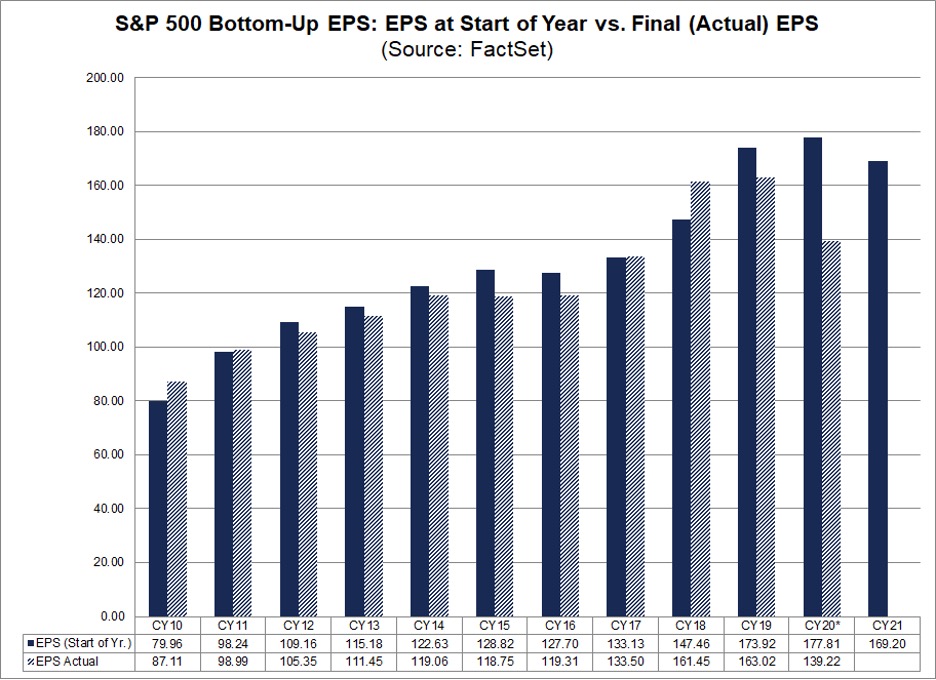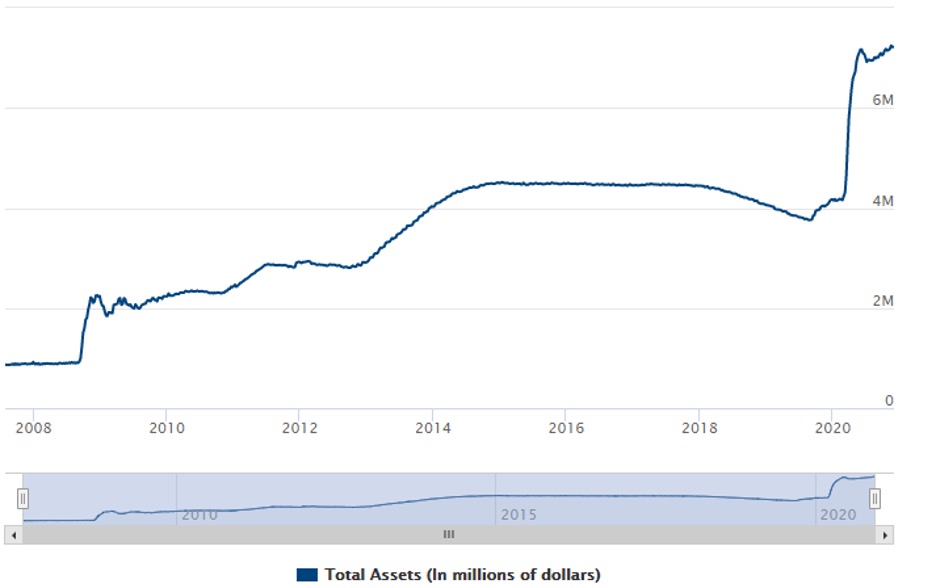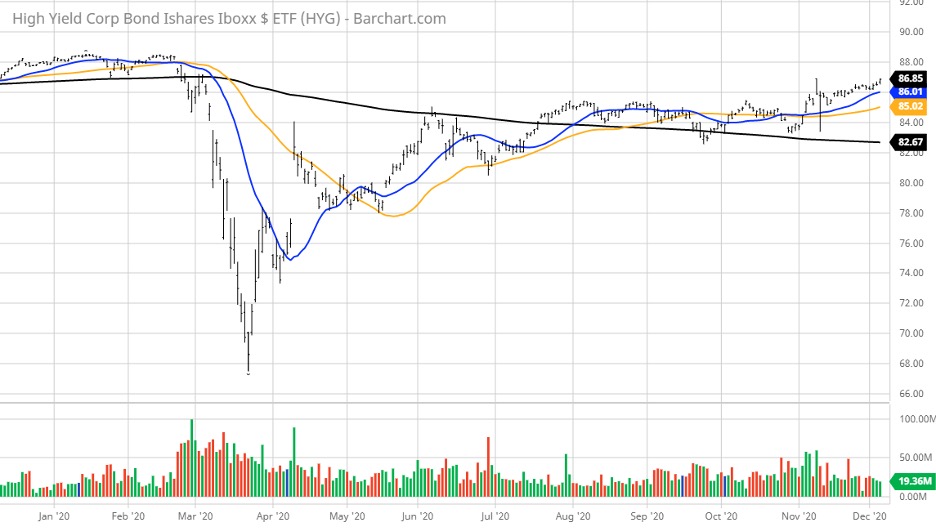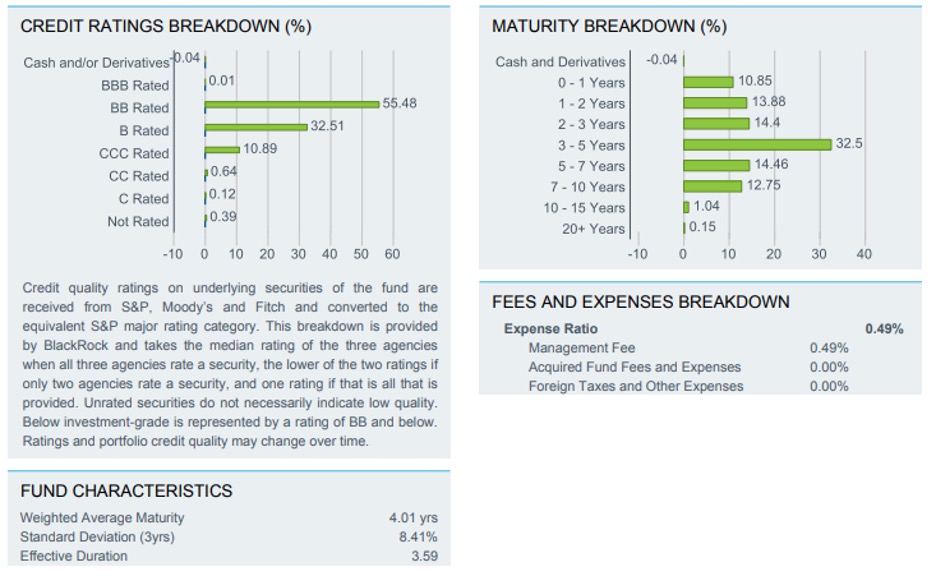Bullish Rotation Moves Out of Bonds And Into Dividend Stocks For 2021
By: Bryan Perry,

*****************************************************************
Publisher’s Note: Are you looking for a great holiday gift? We were going through some areas of our office and found a box of beautiful rose pendants that were widely popular a few years ago. These are 24K gold and pure silver — a hard combination to find in any jewelry store. Click here now to learn more about these elegant pendants and put a big smile on a special person’s face this holiday season! But hurry, we only have 78 of these!
Roger Michalski, Publisher
******************************************************************
Once the market is past the highly charged Georgia runoff election, one might think that investors and fund managers would take particular focus on forward earnings growth relative to where the market currently trades.
By historical standards, the S&P is well valued at around 3,700. If the S&P earns $140 for 2020, it then trades at a current price-to-earnings (P/E) ratio of 26.4 that is clearly rich.
According to FactSet, for 2021, the bottom-up earnings per share (EPS) estimate (reflecting an aggregation of the median EPS estimates for 2021 of all the companies in the index) is $169.20. If $169.20 is the final number for the year, it will mark a record-high EPS number for the index.

Even if we assume the S&P does hit its 2021 earnings forecast of around $170, as modeled by FactSet, that would imply a forward P/E of 21.8 that is also at the high end of the range going back to when this metric for measuring the market’s undervaluation, fair valuation or overvaluation was created.
This topic gets a lot of commentary by the talking heads in the financial media but doesn’t seem to set off any alarm bells at the largest trading desks around the globe. This raises the question of why?
I think most would agree that the explanation that most easily satisfies this question is that the cost of money is so low. While Treasury yields have moved up in the past month from the five, seven, 10, 20 and 30-year maturities, short-term rates from one-month to three-years have remained steady at the extremely low levels targeted by the Fed.

Since most of the Fed’s debt and investment-grade debt is conducted in maturities under five years, the cost to finance the Fed’s growing balance sheet, now at $7.2 trillion, is considered manageable.

Source: www.federalreserve.gov
And the same thinking holds true for S&P 500 companies that can issue A-rated or higher debt at 1.5% interest for bonds that mature in 2030. This is almost free money that fuels expansion or organic operations, spurs accretive acquisitions and ever expands stock buybacks. Even junk bonds with maturities averaging about four years are paying below 5% yields in today’s market.

Shares of iShares iBoxx $ High Yield Corporate Bond ETF (HYG), the largest junk bond exchange-traded fund (ETF) traded with more than $27.5 billion in assets, has some amazing data that provides a big-picture view of just how bullish the debt markets are, in light of how huge they have grown. HYG is almost back to trading at its pre-pandemic high, paying a 4.86% yield.

Source: iShares.com
We’re talking junk ratings here paying under 5% in an up-rate market where the income received is taxed at one’s ordinary income tax rate. This is not a great investment proposition compared to other alternatives.
When looking for income assets to own when inflation and bond yields are rising, we want to steer our focus to equities in companies that can raise prices for their goods and services. As money comes out of low-yielding fixed income, it will rotate into inflation and rate-sensitive equities.
As such, ETFs like the Invesco S&P 500 High Dividend Low Volatility ETF (SPHD) will be solid examples of both attractive yield and capital appreciation potential. With assets of $2.2 billion, this broadly diversified ETF is made up of the S&P 500’s best blue-chip stocks that throw out hefty dividend payouts.
The fund has 49 total holdings, including utilities, real estate, information technology, materials, communications services, consumer staples, energy, financials, health care and consumer discretionary. It is a real “who’s who” of big dividend-paying companies.
This is a made-for-income investor ETF that is seeking blue-chip income and growth and is trading at a 17% discount to its February high. No leverage, short-term gains, long-term gains or return of capital contributes to the monthly dividend payments — just dividends from the assets themselves. The current annual dividend yield is 4.80%.
Shares of SPHD traded as high as $44.42 prior to the March sell-off. Today, they trade at $37.50. Finding a blue-chip, investment-grade asset trading at an 18% discount to its prior high and paying out nearly a 5% yield on a monthly basis is a fortunate situation for income investors seeking to add capital to an elevated market.
This is just one example of when capital dedicated to income comes out of bonds and rotates into more economically sensitive assets, it usually ends up flowing to blue-chip equities, most of which have qualified dividends. When comparing HYG and the other conventional income vehicles to invest in, the case for blue-chip dividend stocks with investment-grade balance sheets is pretty solid.
HIGHEST PUBLISHED FIXED RATES AS OF DECEMBER 2, 2020
Guaranteed Fixed-Income Investments Rate
30-Day Treasury Bill 0.09%
2-Year Treasury Note 0.16%
5-Year Treasury Note 0.42%
10-Year Treasury Note 0.95%
30-Year Treasury Bond 1.70%
Taxable Money Market 0.70%
1-Year Certificate of Deposit 0.70%
5-Year Certificate of Deposit 1.35%
10-Year Investment Grade Corporate 2.23%
The SPDR S&P 500 ETF (SPY) sports a current yield of 1.57% that has come down as the SPY has risen, but still well-exceeds that of the benchmark 10-year Treasury. As long as this 60-basis point premium continues, so will the rally in dividend and dividend growth stocks. The best days for bonds are probably over until the next Great Recession, but some of the best days for dividend stocks are very likely just ahead.








